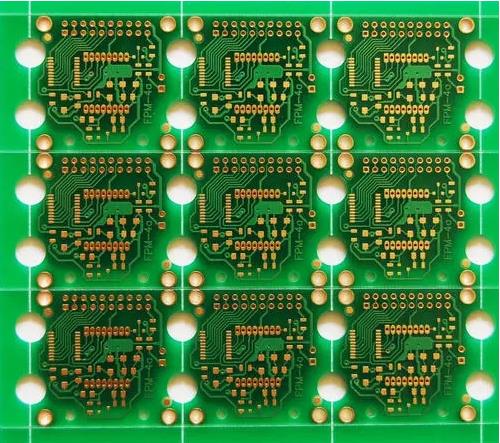1. Drawing the circuit diagram:
a. Call up the corresponding component symbol, connect and draw; and assign the corresponding PCB Decal to it;
b. Check whether there is any error in the network; whether the part number is duplicated or missed; (Save)
c. Check if there is no error, go to net list to PCB board; there should be no error report.

2.PCB drawing:
a. Check whether the package and the network with polarized components are correct;
b. 1>Use AUTO-CAD to draw the PCB frame and convert it to *.dxf file to POWER PCB;
§ Note: When transferring to POWER PCB, please note that the unit should be in metric system.
Convert beforehand in AUTO-CAD.
2>After entering the POWER PCB, change its line width to 0.2mm, combine (combin), and store it in the library for use;
c. First call up the PCB file, then call up the PCB outline, set the PCB outline on the twenty-seventh layer, and use the outer frame to draw the PCB outline, mark the size, and then start the layout.
d. PCB parts layout; (only for SPS)
1> Layout according to the principle of first big and then small, vertical left to right, four circuits first;
2>First place the fixed position components, and then put the INLET, X capacitor, common mode inductance,
Large capacitors, MOS tubes and heat sinks, transformers, output rectifiers and filter capacitors;
§ Note: The choice of heat sink and the choice of transformer will determine the layout of the PCB to a large extent, so the selection of these components should be careful.
§ Note: For all plug-ins, horizontal components should be used as much as possible. (Because vertical components are not prone to short circuits) The pin holes of horizontal components should be ≧1mm. Do not use vertical components as much as possible Avoid deflection and short circuit.
§ Note: For SMT components, the SMT surface should first consider the direction of the tin furnace, because this determines the direction in which the SMT should be arranged.
§ Note: When placing AI surface parts, pay attention to whether the “FG” PIN of INLET will touch other elements.
Parts, such as: X capacitors, fuse shells are metal, so please pay attention to the distance with other metal shells, such as: electrolytic capacitors, high-voltage capacitors, pay attention to the radiator as far as possible; in order to avoid heat transfer to the capacitor and reduce the life of the capacitor;
§ When placing a vertical 2W resistor, peripheral components should be considered, and it is best to omit things such as conduits;
§ In terms of bridge stack, if space is available, it is best to use four diodes instead of bridge stack, yes;
When designing the radiator, the larger radiator must be designed with more than two PIN pins; when placing the MOS tube, pay attention to the shortest connection between its "D" pole and the transformer; there are also "G" and "S" connections. Line, is it easy to go;
§ In the PWM control part, this part should be arranged neatly, and the IC PWM output line should be as short as possible, and this part should be as far away as possible from the AC input part; if there is space, diodes and voltage regulator tubes should be plugged in as much as possible, which can be Cost Down
§ With PFC, the PFC IC control part should be separated from the PWM IC control part, especially the respective GND should be separated to the common pin of the high-voltage capacitor. The PFC signal line should not be too thick.
§ SMT capacitors, especially high-voltage SMT capacitors, should use plug-ins as much as possible, which can be Cost Down; SMT components should be farther away from the AI component pads; in case of large current traces, neck-down routing should be adopted;
§ The transformer is generally placed close to the MOT tube and the secondary components, and a distance of more than 3mm should be maintained. Pay special attention to the transformer without piping, which needs to be led out with three-layer insulated wire, and the transformer's wire package and iron core are regarded as For the primary components, pay special attention to the distance between the secondary components and the distance between the secondary components and ensure a distance of more than 4MM. If possible, the PIN of the transformer should be retained as much as possible, so that the bulky transformer can become more rigid;
§ The TO-220 packaged rectifier tube should pay attention to the distance from the output filter capacitor, don't put it against the output filter capacitor, the output capacitors should be arranged in order and easy to route.
§ When placing the parts to the side, keep a distance of at least 0.5~1.0mm from the edge, so as not to interfere with each other when connecting the pieces;
§ The distance between the output component and the SR, understand the size of the SR and the thickness of the line; it should be sparse but not sparse, dense but not messy, and it should look compact and tidy;
§ When starting to route, set the trace width to 0.3mm, and the spacing is 0.3mm. This trace is mainly to lay the foundation for the subsequent copper paving.
The above is an introduction to the precautions for designing switching power supply PCB Layout. Ipcb is also provided to PCB manufacturer and PCB manufacturing technology.